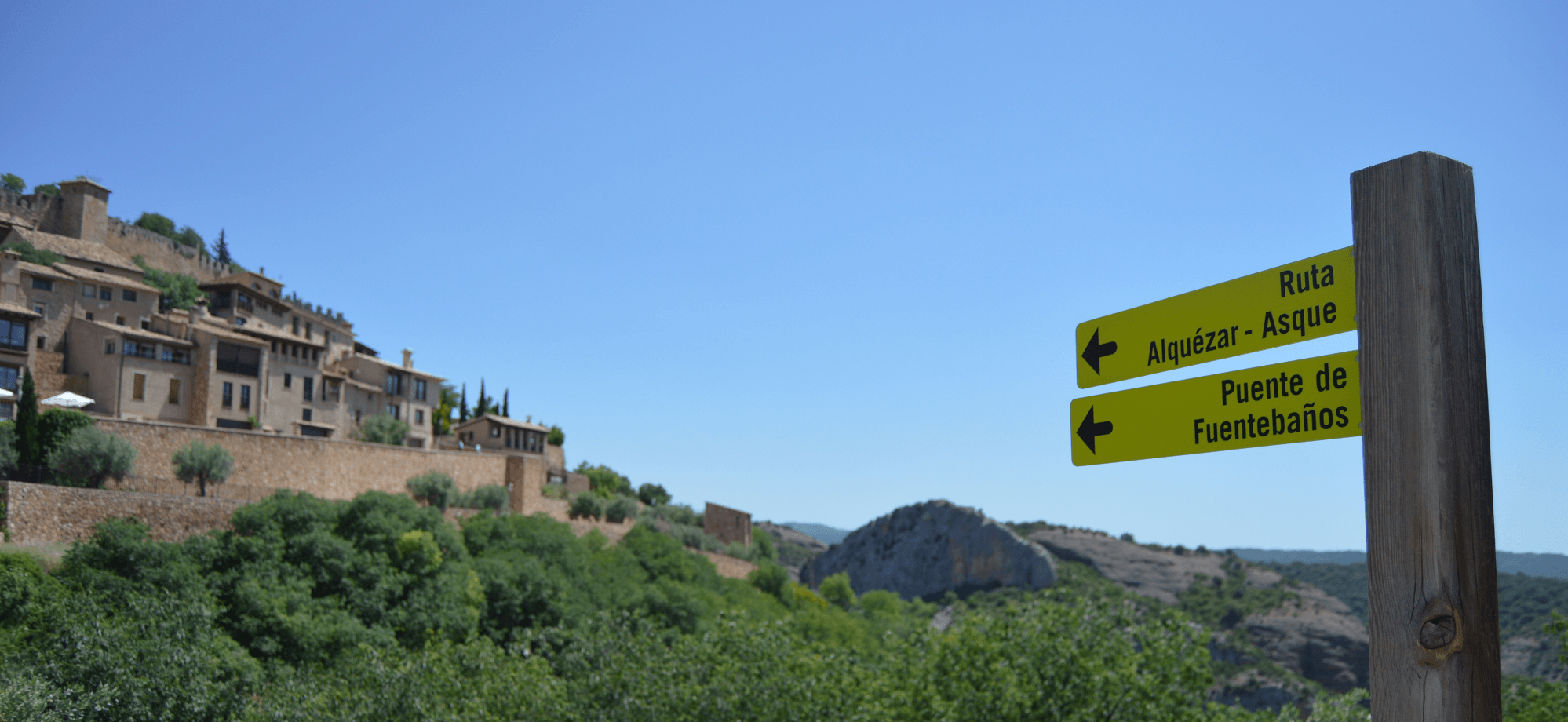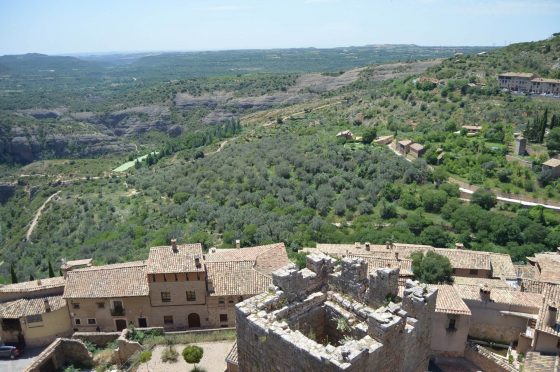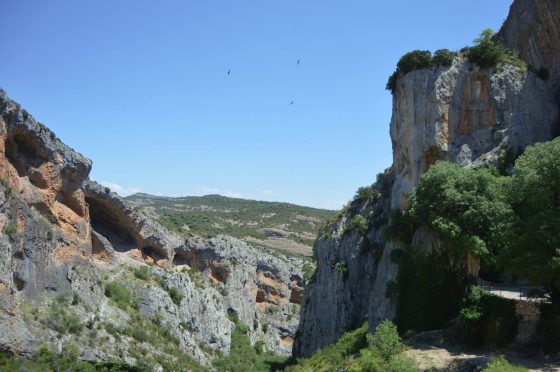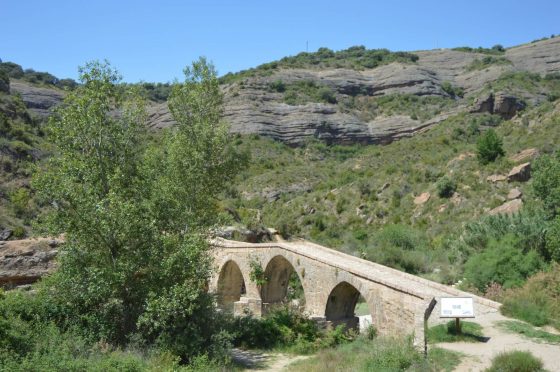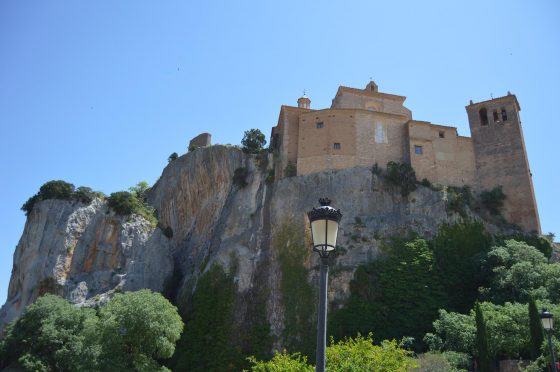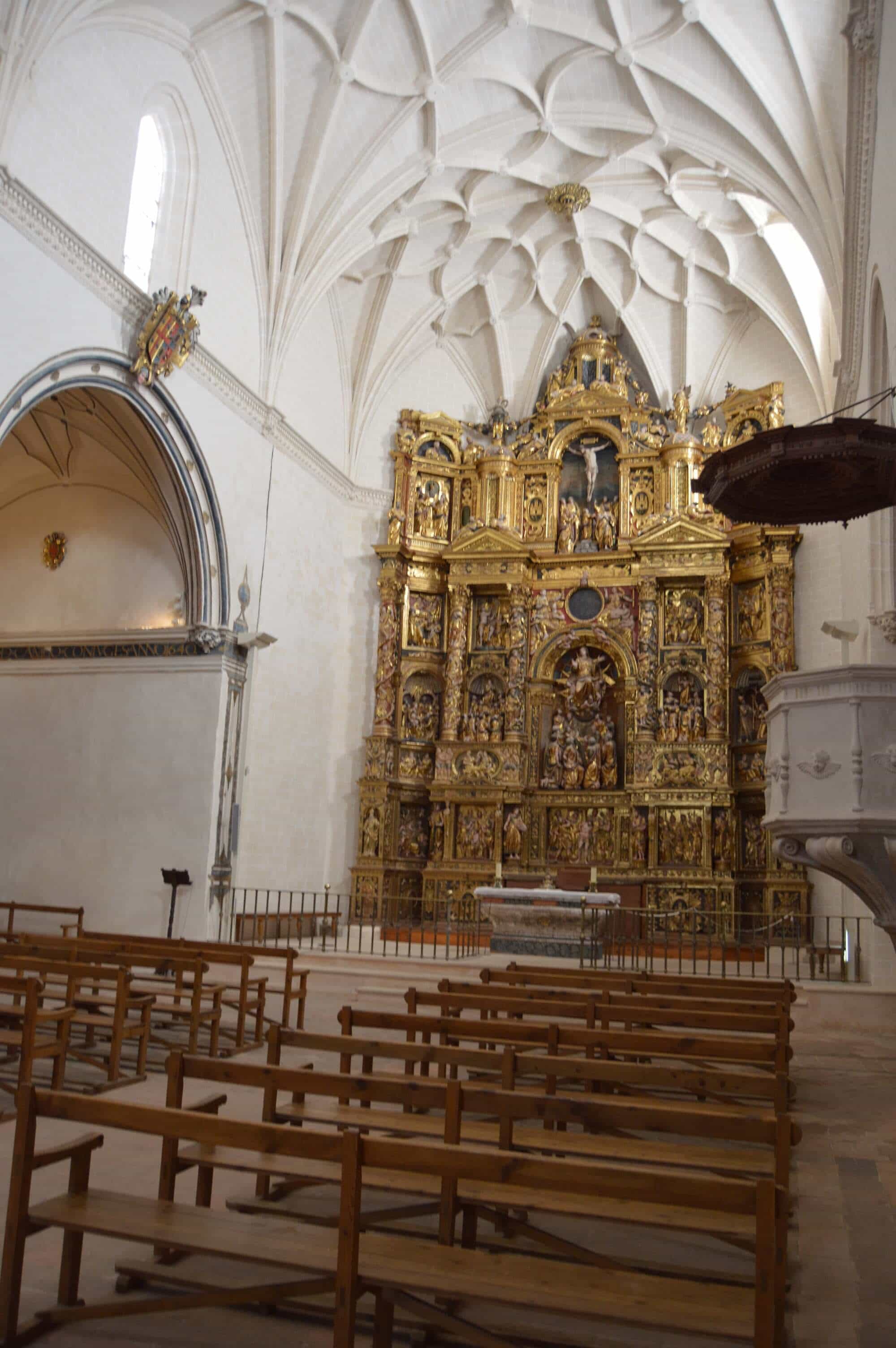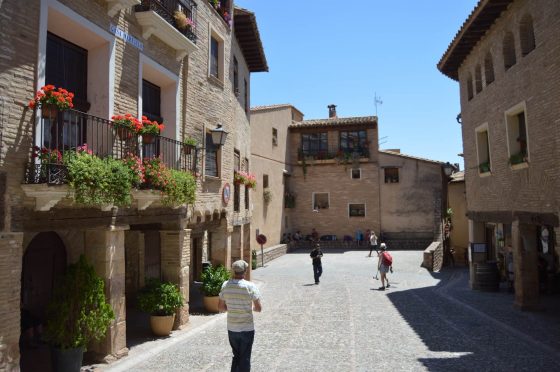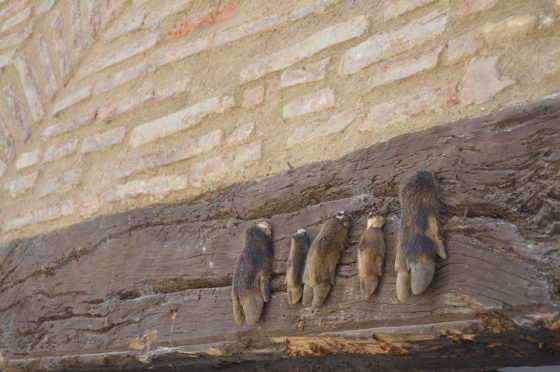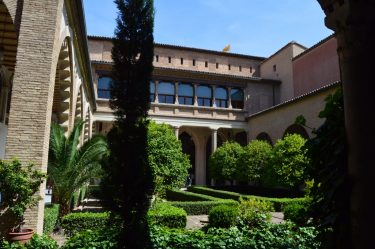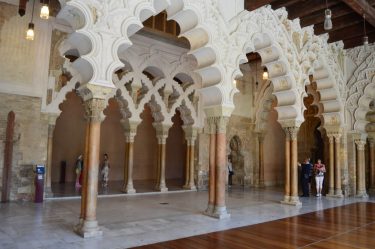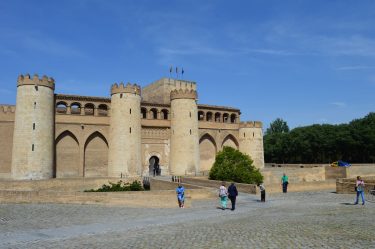You can find itineraries, route guides and walking holidays in the Spanish Pyrenees (Sierra de Guara National Park) here.
Off the beaten track, but well worth the journey is the medieval hilltop town of Alquézar.
Everyone was indoors taking their siesta, meanwhile, a pasty Welsh boy was battling off the sun on a hike through the Rio Vero gorge.
From what I knew of the place, I’d heard described as “Muy bonita y muy pequeña” from locals in Barbastro and Huesca. Even with my broken spanish, I knew that was a pretty good omen.
Cliimbing out of the chasm, a narrow, rocky path winds its way through the valley. Towering over the hightop village is the Collegiate Church of Santa Maria. From here, you can see condors circling even higher overhead. It’s no wonder this place is a major birdwatching destination, the canyons are a sanctuary for some of Europes rarest birdlife – including the elusive Wallcreeper and the Lammergeier (one of the two Lammergeier strongholds left in Europe).
Dwarfed by an imposing, golden edifice before you, the church seems steeped in centuries of Catholicism and its works. With a little bit of background history, I found that that the town was originally a Moorish fortress, built at the beginning of the 9th century as a strategic defense point against the advancing Christian forces (who eventually overcame the site in the 11th century). The name “Alquézar” actually derives from the Moorish name of “al-Qasr”, meaning fortress.
Wandering around the cobbled streets of Alquézar, with church bells chiming on the hour – all added to the feeling of travelling through a medieval town. When you come across deer hooves nailed to the archways of some of houses (to ward off evil spirits?) you can’t help but get the impression of something archaic surviving into the present day.
The higher you climb up through the cobbled streets of Alquézar, the better your vantage point over the canyon. From the belfry of the highest church in the village you can peek your head out for a panoramic view over the area.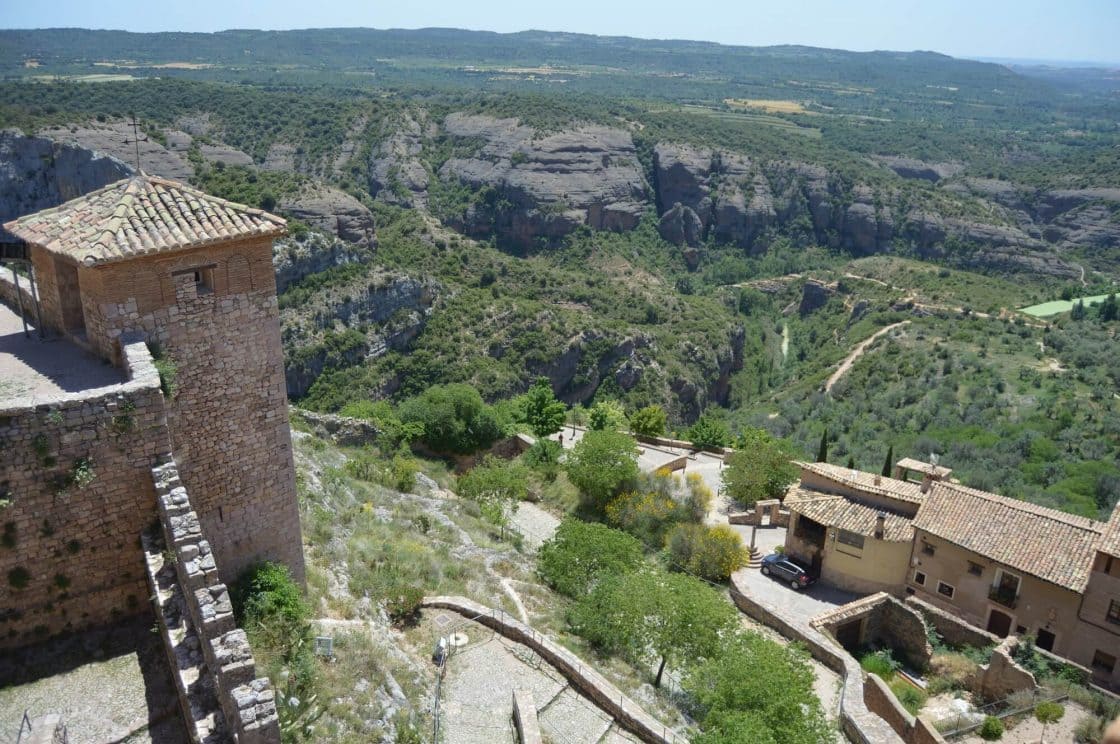
Zaragoza is the nearest airport to the region and well worth spending an extra day to explore. Its a city with a thriving cultural life, that still retains much of its heritage, and this shows in the way museums, bars, grand churches and structures clamour for space and spill over into one another. I’d recommend visiting the Palacio de la Aljaferia – an 11th century Islamic fortress, that through careful restoration has managed to maintain much of the ornate, geometric detail that make the palace so distinctive.
I’ve been lucky enough to renew my love of walking and the outdoors everytime I come across a new landscape, but walking the Rio Vero was in a class of its own. In late spring, it was ideal weather for walking and the perfect excuse to dust off those walking boots and explore somewhere different.
For more details about hiking the Pyrenees Spain, read some of our waking itineraries and route guides over here.

